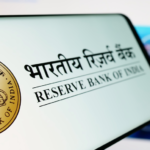Tag: Indian Patent Office
August 2, 2022
Intellectual Property | Patent
Intellectual Property | Patent
Do scientific publications exempt patent applications f...
One of the three universal requirements for the grant of a patent is that the patent must be for a new invention. The Indian Patents Act, 1970 (the Act) defines a ‘new invention’ in Section 2(l) as ‘any invention or technology which has not been anticipated by publication in any document or used in the country or elsewhere in the world before the date of filing of patent application with complete specification. ......
February 7, 2022
Intellectual Property | Patent
Intellectual Property | Patent
Patent Claim Drafting: Two-Part Claims and Claim Charac...
At the heart of a patent application lies its claims. A claim is a signifier of the scope of protection that is sought under the patent. Claims are the first and most important aspect to be examined during prosecution, infringement, and litigation. Every patent application must be accompanied by at least one claim, and usually, an application contains several more. ......
November 29, 2021
Intellectual Property | Patent
Intellectual Property | Patent
Explaining Inventions Better: Models and Samples in Ind...
Patent applicants are sometimes unsure of whether working models or invention samples must be submitted when filing for an Indian patent; or, if a model or a sample is indeed required, the form and manner of such submissions. Under Indian law, there is no requirement to either mandatorily or voluntarily submit models or samples along with an application; such submissions are necessary only upon a request made by the Controller. ......
October 11, 2021
Intellectual Property | Patent
Intellectual Property | Patent
Do reference signs clarify or limit the scope of patent...
Reference signs are used to improve the intelligibility of claims. Sometimes also known as “reference numerals”, they help understand claims in light of the specification and drawings on record. If a patent application contains drawings, the claims can be clarified by establishing a connection between the features mentioned in the claims, corresponding to reference signs in the drawings. ......
September 28, 2021
Intellectual Property | Design
Intellectual Property | Design
Narrowing the Field: Selection Patents and Purposive Se...
Inventions that fall within, or overlap with, disclosures in the prior art are called “selection inventions”. Generally, selection inventions involve the selection of one or more specific embodiments, such as individual elements, subsets, or sub-ranges, within a larger known set or range disclosed in the prior art. This raises critical questions around how the novelty and inventive step of selection patents should be judged. ......
January 21, 2021
Intellectual Property | Patent
Intellectual Property | Patent
Filing data after applying for an Indian patent: Drafti...
Applying for a patent is a race against time to secure the earliest priority date (i.e., the date of the first filing of a patent application). As a result, patent applications are often filed with accompanying data that do not always capture all the facets of the invention. In such cases, using post-filing data to support the applications is often the only course available. ......
November 27, 2020
Intellectual Property | Patent
Intellectual Property | Patent
Patent Claim Drafting:“At least” and the conjunctive/di...
The phrase “at least one of” is commonly used in patent claims, but its interpretation is subjective and has led to some controversy. The issue that arises is this: when the phrase in its entirety is “at least one of A, B and C”, should it be understood as at least one of A AND at least one of B AND at least one of C, or should it be understood as at least one of A OR B OR C. ......




















